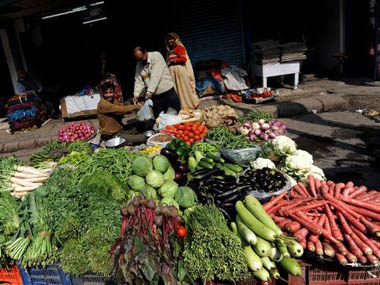Wholesale price index-based inflation has hit a record low of -2.06 percent, but a closer look at the internals shows that this is offering no respite to the common man. [caption id=“attachment_2157631” align=“alignleft” width=“380”]  AFP[/caption] This is because the fall in the overall price index has been mainly because of the global crude oil price that has been on the decline in the last few months. Meanwhile, prices of the daily-use items for the common man have been on the rise. This is more than offsetting the relief from the oil price fall. As per the graphic below, food articles inflation have been steadily rising over the last six months. In September 2014, it stood at 3.68 percent. This fell to 0.66 percent in November 2014 and then rose to hit 8 percent in January and 7.74 percent in December. The following graphic shows the items that are making your food plate pricier. Onions have seen a sharp increase in prices. The inflation in this staple item was a -58% six months back. In Feb, it stood at 26.58 percent. What is scary is even in January, the prices were in negative zone – at just -1.9 percent. From there the inflation has shot up to 26.58 percent. Chances are the prices will rise further due to the unseasonal rains that have destroyed the standing crops in Maharashtra and Gujarat. Then come vegetables. Here the rise has been from a -15 percent to 15.5 percent over the same period. Here too unseasonal rains are likely to play spoil sport in the months. Next items are pulses, a key protein food ingredient for the poor households, which have seen inflation rising from 6.69 percent in September to 14.59 percent in February. Fruits have seen a slight fall from 21.14 percent to 16.84 percent during the period. But this is no respite because the inflation is remaining at the elevated levels double-digit levels despite the fall. Food articles are part of the primary articles group in the overall WPI. The reason for benign primary articles inflation in Febraury of 1.43 percent is the steep fall in the minerals prices, which have no direct bearing on the common man’s pocket. Food articles contribute 14 percent to the overall inflation. If the warning from the International Monetary Fund comes true, this could just be the beginning of a rising cycle in food prices. Data support by Kishor Kadam
If the warning from the International Monetary Fund comes true, this could just be the beginning of a rising cycle in food prices
Advertisement
End of Article


)

)
)
)
)
)
)
)
)



